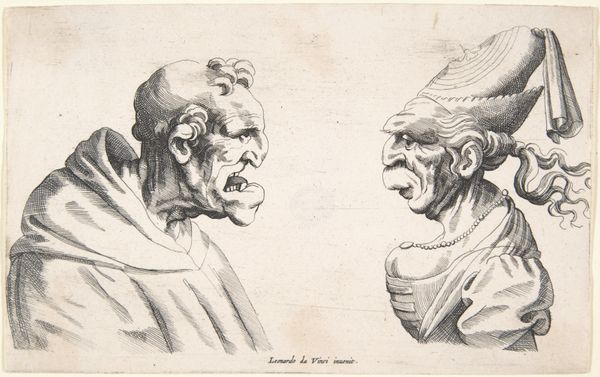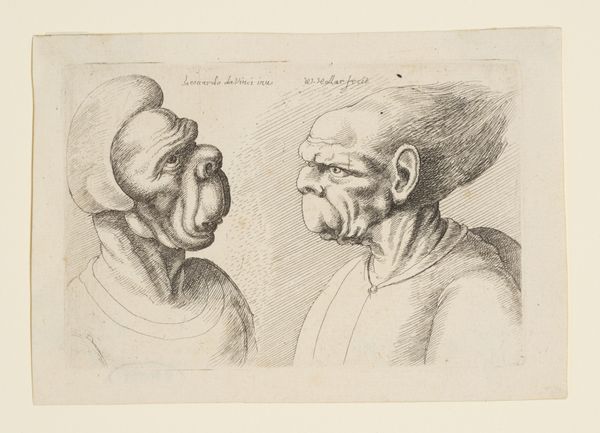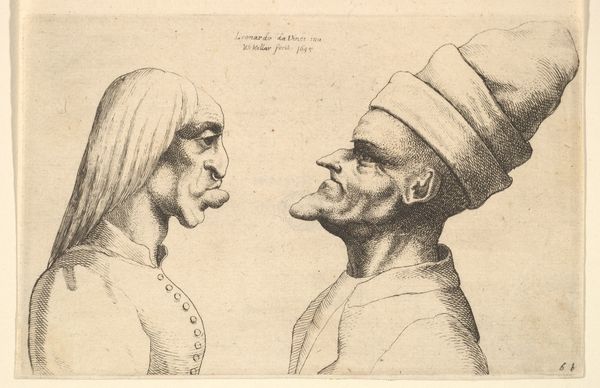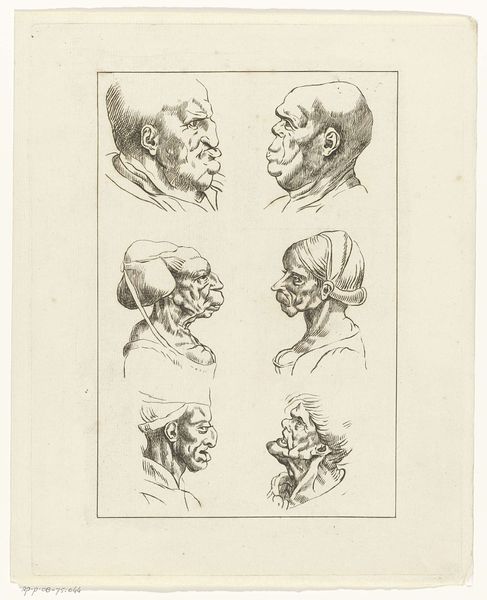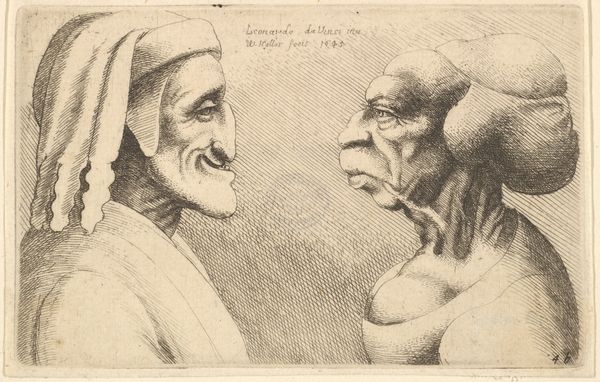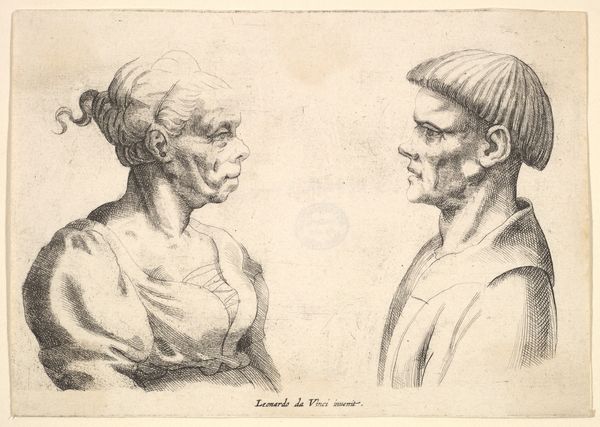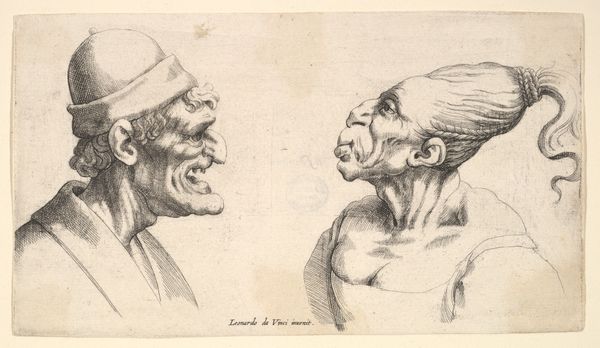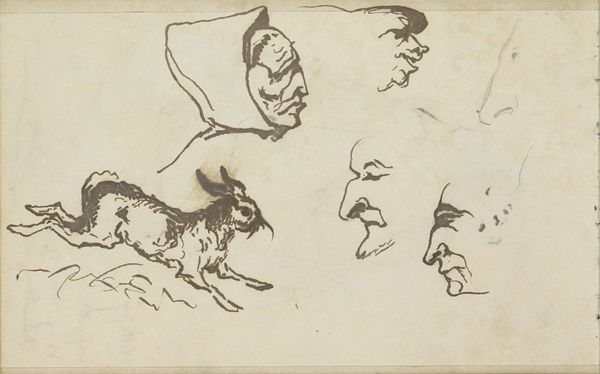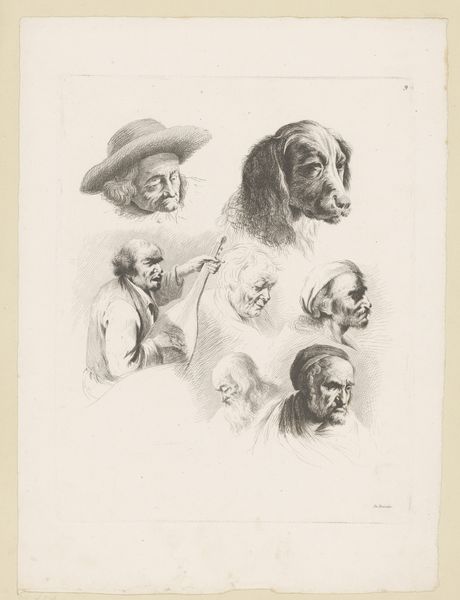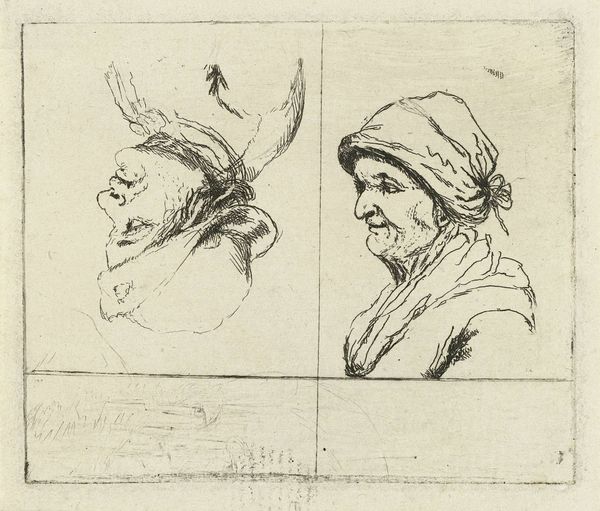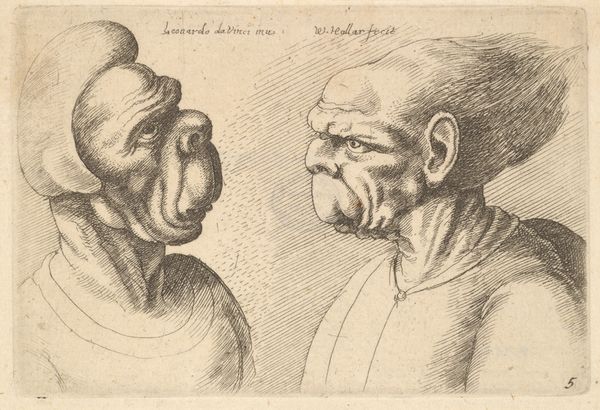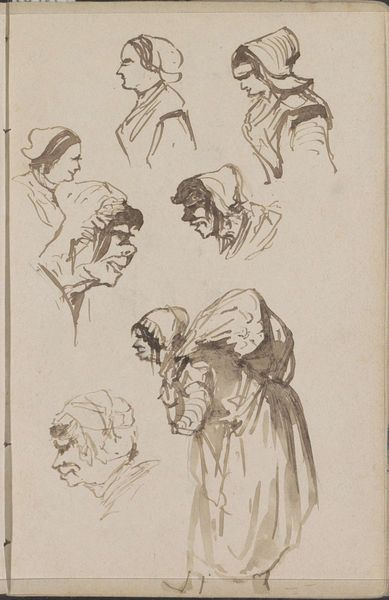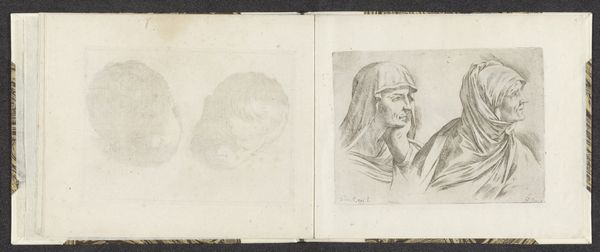
drawing, print, etching
#
portrait
#
drawing
#
baroque
#
head
# print
#
etching
#
caricature
#
mannerism
#
figuration
#
men
#
line
#
portrait drawing
#
history-painting
Dimensions: Sheet: 3 3/4 × 5 1/2 in. (9.5 × 14 cm)
Copyright: Public Domain
Curator: This is Wenceslaus Hollar’s "Two Deformed Heads Facing Each Other," created around 1645. He employed etching techniques to give us these striking caricatures. The print is currently housed here at the Metropolitan Museum of Art. Editor: They are fascinating! Stark. The one on the left, cloaked in shadow with that long, drooping cap… and the one on the right, almost aggressively protruding. I find the contrast unsettling. Curator: Hollar was quite prolific as a printmaker, reproducing works and creating his own. In examining Hollar's process, you can appreciate how the lines define form and convey texture using relatively few resources. The starkness you mentioned comes through so intensely due to the very materiality of the piece. The ink on paper, the etched lines... Editor: Right, but I also read this as deeply influenced by the socio-political currents of 17th-century Europe. There’s an inherent critique here, don’t you think? This was a period defined by rigid social hierarchies. How did viewers interpret such unflattering depictions? Did they challenge or reinforce existing power structures? Curator: I agree that art never exists in a vacuum. Hollar wasn’t merely experimenting with etching techniques; he was consciously choosing to represent certain visages and exaggerate them to convey, as you put it, some kind of critique, some kind of statement on society. He makes a potent choice by making men his subjects. Editor: And the figures, perhaps "grotesque," certainly defy typical beauty standards of the time. I wonder how they were received. Was it a commentary on vanity, social standing, or something else entirely? How were public figures implicated? The figures seem almost individualized; I almost sense they could be specific people of significance at the time! Curator: Yes, precisely! Through these stark materials, we witness not just craftsmanship, but social commentary. It speaks volumes about Hollar's conscious artistic practice. We can delve into who had access to prints like these in the 17th century, what they signified about consumer culture... It's exciting! Editor: Indeed! It's the dynamic tension between technique and social history that really grabs you here, isn't it? It becomes less about aesthetic beauty and more about the print's role within its contemporary culture. Curator: Exactly. It is this layering of materiality and societal insight that provides a wealth of opportunity to contextualize Hollar's piece and other artwork from the period. Editor: It really emphasizes how prints had an agenda of their own, didn’t they?
Comments
No comments
Be the first to comment and join the conversation on the ultimate creative platform.
